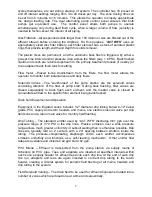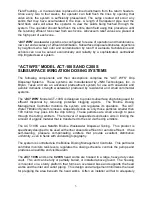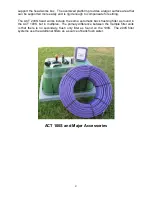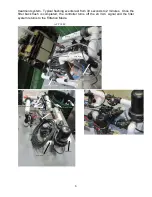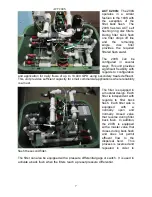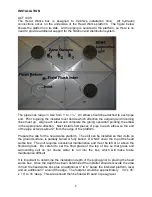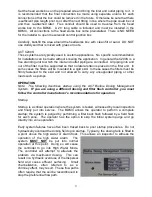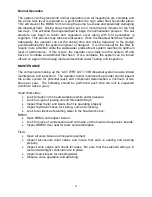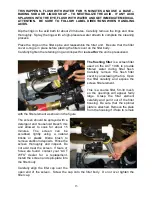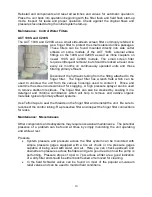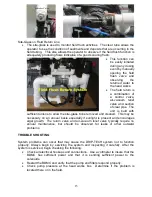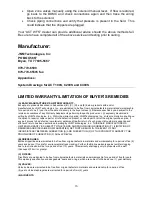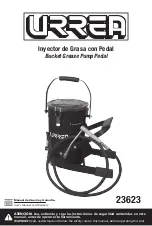
1
A
A
C
C
T
T
WATER FILTRATION SYSTEMS
A
dvanced
C
leaning
T
echnology
Drip irrigation is the most precise method for dosing water into the soil profile. Currently
utilized on millions of acres all over the world, pressure emitter (drip or trickle)
technology has set new standards for measured dosing on sites where precision is vital.
Such a requirement exists regarding land treatment and disposal of wastewater. The
purpose of this paper is to describe the wastewater system which distributes the effluent
underground by drip technology into the soil’s aerobic zone.
Characteristic Advantages:
1. Safety -- all pathogens are kept under the soil surface where they are quickly
digested by beneficial soil bacteria. Spray irrigation systems and standard
subsurface absorption fields can cause health risks if water ponding occurs.
2. Adaptability -- can be installed in heterogeneous soils not uniformly graded.
Drainfield loading rates derived from subsoil and other site data can be met
precisely through the controlling mechanism in the pump station.
3. Diminished Susceptibility to Plugging -- the wastewater is pressure-filtered prior
to field distribution, and all lines in the system are periodically flushed.
4. Flexibility -- with subsurface drip irrigation, it is possible to quickly change dosing
amounts in the controller if ponding occurs in any of the zones.
5. No Size Limitation -- the size of standard absorption fields is limited by the need
to increase depth of the lines for gravity flow. "
ACT
WFS
" installations are
unlimited in size because pressure-dosed effluent is applied uniformly throughout
the dripper line matrix by pressure-compensating emitters. Emission uniformity
greater than 90% can be achieved across drain fields of ten acres or larger.
6. Less Expensive with Quick Installation -- slick, sturdy 1/2" dripper tubing with
integral emitters can be installed subsurface rapidly using a vibratory plow.
7. Opportunity for Reuse -- "
ACT
WFS
" wastewater disposal systems can also
function as supplementary irrigation systems. Beneficial reuse is possible by
watering parks, street medians, landscaped areas around buildings, or cash
crops such as ornamentals or forage grasses.
Pump Station Equipment and Operation
The pump station for commercial systems includes a dual alternating pump controller
with interval timer, duplex centrifugal or submersible pumps, disc filtration with
automatic back flushing, flow meter and solenoid valving necessary to manage all
pumping operations.
Dosing Controller --Site-specific criteria determine the amount of effluent to be loaded
per zone per day. Intervals between dosing cycles, as well as the duration of dosing


